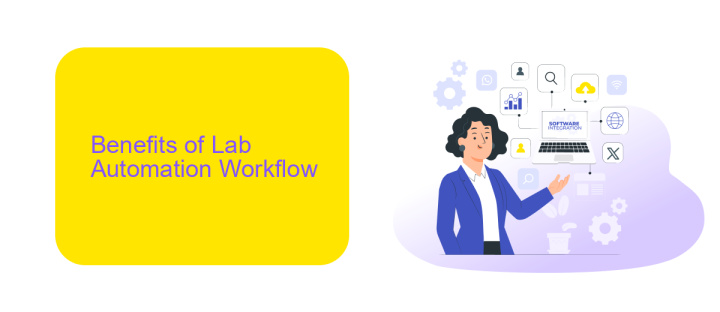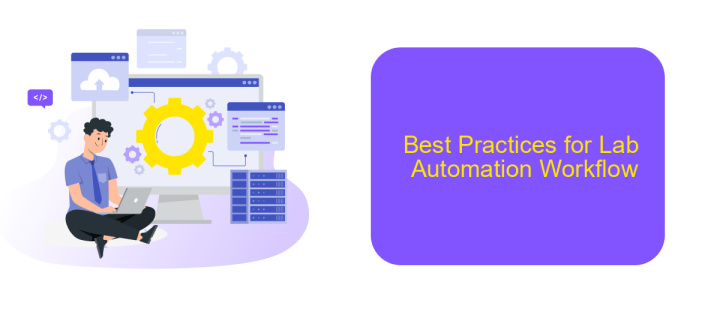Lab Automation Workflow
Lab automation workflows have revolutionized the way scientific research and diagnostics are conducted. By integrating advanced robotics, software, and data management systems, laboratories can achieve unprecedented levels of efficiency, accuracy, and reproducibility. This article explores the key components of lab automation workflows, their benefits, and how they are transforming the landscape of modern laboratories.
Introduction
Lab automation workflow is a critical aspect in modern laboratory environments, streamlining processes and enhancing efficiency. By automating repetitive tasks, labs can significantly reduce human error, increase throughput, and ensure consistent results. This transformation is essential for laboratories aiming to stay competitive and maintain high standards of accuracy and productivity.
- Reduction of manual errors
- Increased throughput and productivity
- Consistent and reproducible results
- Efficient data management and analysis
Integrating various lab instruments and software systems is crucial for a seamless automation workflow. Services like ApiX-Drive facilitate these integrations by providing a user-friendly platform to connect different applications without the need for complex coding. This enables labs to automate data transfer, streamline operations, and focus on critical scientific tasks. As a result, lab automation not only improves efficiency but also empowers researchers to achieve more reliable and faster outcomes.
Benefits of Lab Automation Workflow

Lab automation workflows significantly enhance efficiency by automating repetitive and time-consuming tasks. This automation reduces the potential for human error, ensuring more accurate and reliable results. By streamlining processes, laboratories can increase throughput, allowing scientists to focus on more complex and innovative research activities. Additionally, automated systems can operate continuously, further boosting productivity and facilitating faster project completion.
Another key benefit is the improved data management and integration capabilities. Automated workflows can seamlessly integrate with various laboratory information management systems (LIMS) and other software, ensuring smooth data transfer and analysis. Services like ApiX-Drive can be instrumental in setting up these integrations, allowing labs to connect multiple applications and automate data workflows without the need for extensive coding knowledge. This not only saves time but also ensures data consistency and integrity across platforms, enhancing overall laboratory efficiency and effectiveness.
Considerations for Implementing a Lab Automation Workflow

Implementing a lab automation workflow requires careful planning and consideration of various factors to ensure success and efficiency. The key considerations include understanding the specific needs of the laboratory, the compatibility of existing equipment, and the integration of new technologies.
- Identify the specific processes and tasks that need automation.
- Evaluate the compatibility of current lab equipment with automation technologies.
- Consider the scalability of the automation solution to accommodate future growth.
- Ensure proper training for lab personnel to operate and maintain automated systems.
- Utilize integration services like ApiX-Drive to seamlessly connect various lab instruments and software.
By addressing these considerations, laboratories can achieve a streamlined and efficient workflow. Proper integration of automation technologies, such as using ApiX-Drive for seamless connectivity, can significantly enhance productivity and data accuracy. Additionally, ongoing evaluation and adaptation of the workflow will help in maintaining optimal performance and meeting the evolving needs of the laboratory.
Best Practices for Lab Automation Workflow

Implementing a successful lab automation workflow requires careful planning and execution. One of the key aspects is to ensure that the workflow is scalable and flexible to accommodate future advancements in technology and changes in lab processes. Proper documentation and standard operating procedures (SOPs) are essential to maintain consistency and reliability.
Another best practice is to prioritize data integration and interoperability. Seamless data flow between different systems and devices can significantly enhance efficiency and reduce errors. Utilizing integration services like ApiX-Drive can simplify the process of connecting various lab instruments and software, ensuring smooth and automated data transfer.
- Regularly update and maintain automation software and hardware.
- Train staff thoroughly on using automated systems.
- Implement robust data backup and recovery solutions.
- Monitor and analyze workflow performance for continuous improvement.
Lastly, it's crucial to engage all stakeholders, including lab technicians, IT staff, and management, in the automation process. Their input can provide valuable insights and help identify potential challenges early on. By fostering a collaborative environment, you can ensure a more effective and successful lab automation workflow.
Conclusion
In conclusion, lab automation workflows significantly enhance the efficiency and accuracy of laboratory processes. By integrating advanced robotics, software solutions, and data management systems, laboratories can streamline operations, reduce human error, and accelerate research and development timelines. This transformation not only boosts productivity but also ensures higher quality and reproducibility of experimental results.
Moreover, the integration of automation tools with existing laboratory information management systems (LIMS) can be seamlessly facilitated using services like ApiX-Drive. ApiX-Drive offers robust solutions for connecting various software applications, enabling smooth data transfer and synchronization. This ensures that all components of the lab automation workflow operate in harmony, further optimizing the overall laboratory performance. As the field of laboratory automation continues to evolve, embracing these innovative technologies will be crucial for staying competitive and achieving scientific breakthroughs.
FAQ
What is lab automation workflow?
How can lab automation improve efficiency?
What types of tasks can be automated in a laboratory?
How can I integrate different lab instruments and software systems?
What are the benefits of using a service like ApiX-Drive for lab automation?
Apix-Drive will help optimize business processes, save you from a lot of routine tasks and unnecessary costs for automation, attracting additional specialists. Try setting up a free test connection with ApiX-Drive and see for yourself. Now you have to think about where to invest the freed time and money!

